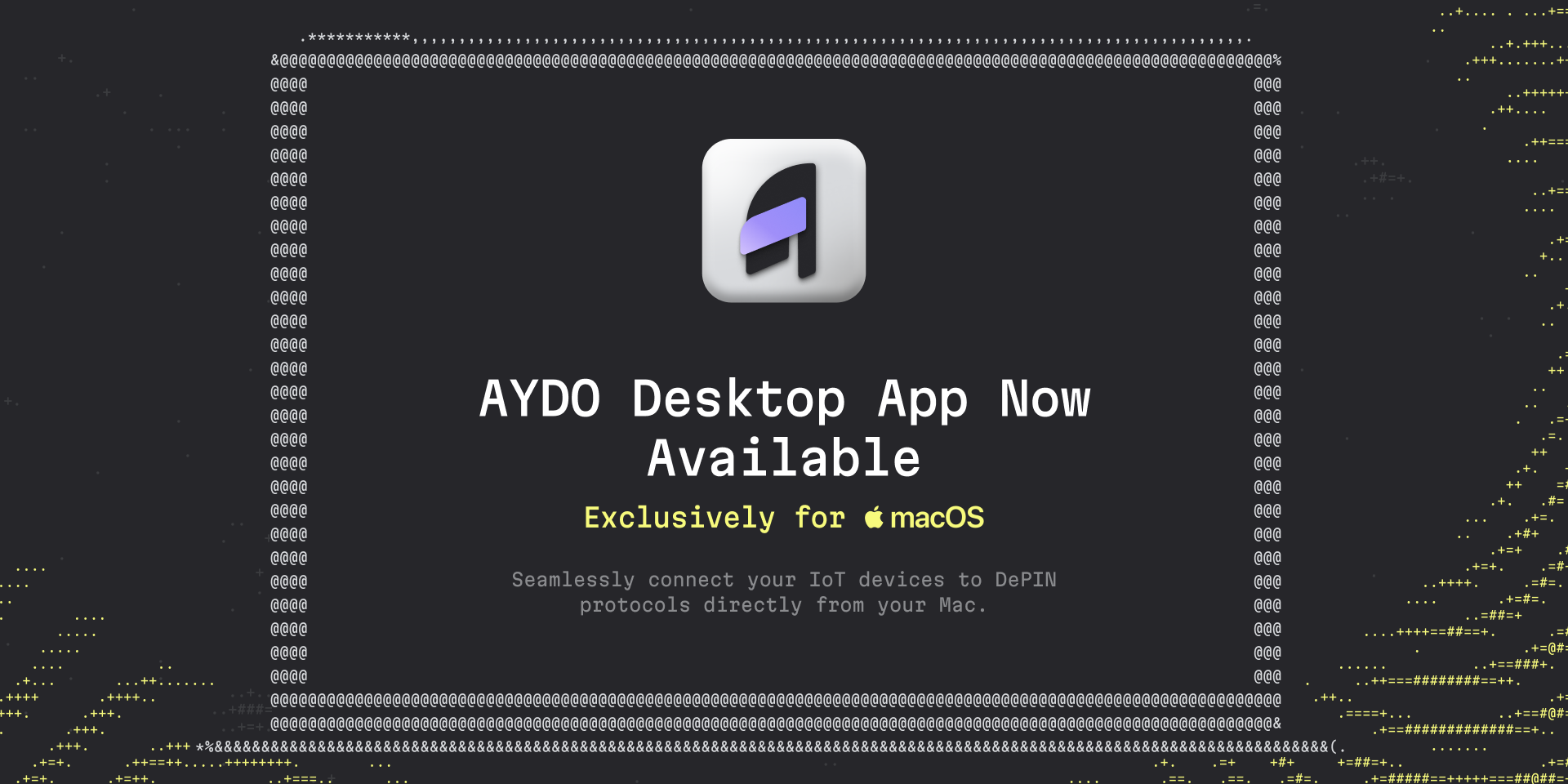When we launched the first builds of the AYDO Hub, they were deployed on single-board computers like the Raspberry Pi. This approach worked well for technically experienced users: the install script set up NodeJS, Zigbee2MQTT, and the AYDO core, and required some command-line interaction and manual configuration.
For tech enthusiasts, this seemed reasonable. But during our closed beta test, which included 267 participants, we started receiving dozens of messages: “The script failed at step 4,” “Where do I find /dev/ttyUSB0?” “I’ve never used the terminal before…”
Later, in the open testnet phase, it became even clearer: most people want to connect to the DePIN economy as easily as they install Slack, Spotify, or Discord — without buying extra hardware and without touching the command line.
That’s when we decided to focus all development efforts on a desktop application. The result of this work is the release of AYDO for macOS.
What Changed with AYDO Desktop for macOS
Now, the setup is as simple as it gets for any Mac user: download the .dmg from the AYDO website, drag the icon to your Applications folder, and launch AYDO. Done.
Behind this simplicity lies a significant technical effort: under the hood, AYDO launches Zigbee2MQTT and AYDO Core as background processes — the user sees only a clean and user-friendly interface where their devices appear immediately.
-
No terminal required. No more
wget,sudo bash,dmesg, ornano. Everything runs like any regular Mac app. -
Automatic updates. New features, partner DePIN integrations, and even security patches are delivered silently in the background.
-
Hot-plug support. Plug in a new Zigbee coordinator or sensor — AYDO detects it instantly.
-
Intuitive interface. From connecting to streaming data, the whole journey takes under 5 minutes — even for users who’ve never heard the word “Zigbee.”
You can find a complete, step-by-step installation and setup guide here: Step-by-Step Guide to Installing the AYDO Desktop Application.
Our goal is to make the entry point as accessible as possible, especially for those just beginning to explore Web3 infrastructure and decentralized networks.
And What About Raspberry Pi?
While the Raspberry Pi is no longer required to run AYDO, it remains a key part of the infrastructure. If you plan to set up a full-scale “sensor farm” with 24/7 uptime and minimal power consumption, Raspberry Pi is still the ideal solution. It integrates easily with the AYDO hub, supports deep customization, and works as a fully autonomous node.
What’s Next?
We’re actively working on new partner integrations: more DePIN networks, more data streaming use cases, and new earning opportunities for our users are on the way. Follow us on X, Discord, and Telegram for the latest announcements.
At the same time, we are developing AYDO Desktop for Windows and Linux, so that every user, regardless of their operating system, can easily connect to AYDO and participate in the new data economy.
AYDO is getting closer. Now all you need is a Mac, a sensor, and a bit of curiosity. Connect, stream, and earn. All in one click.
